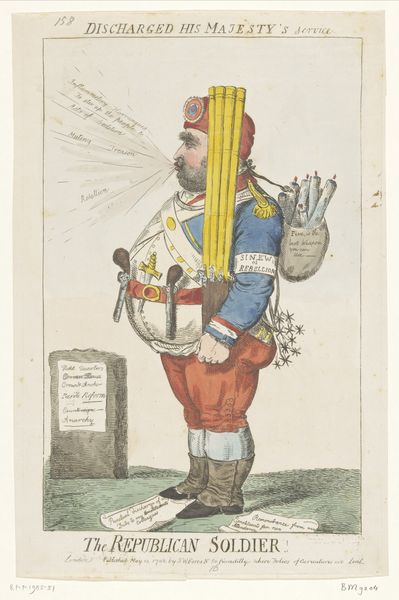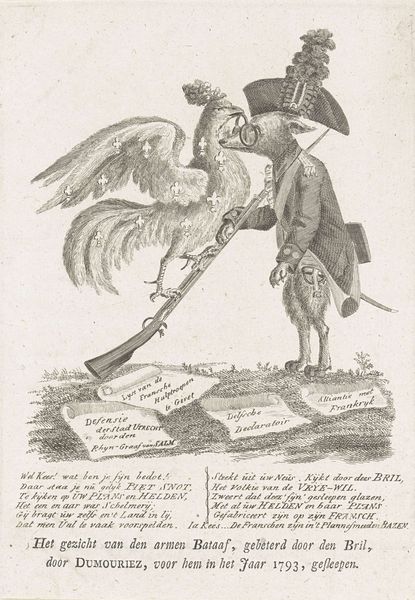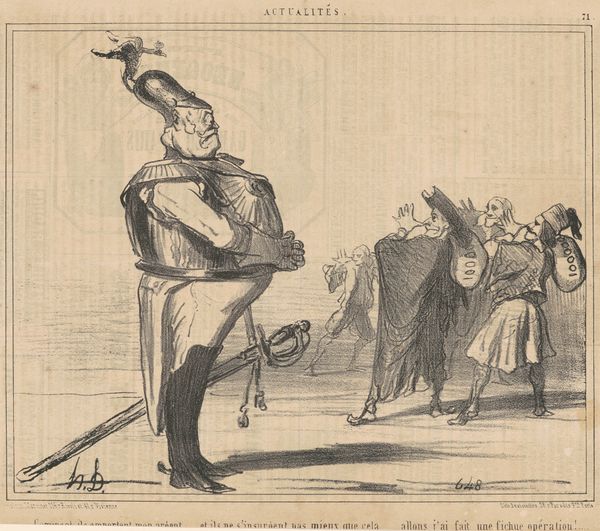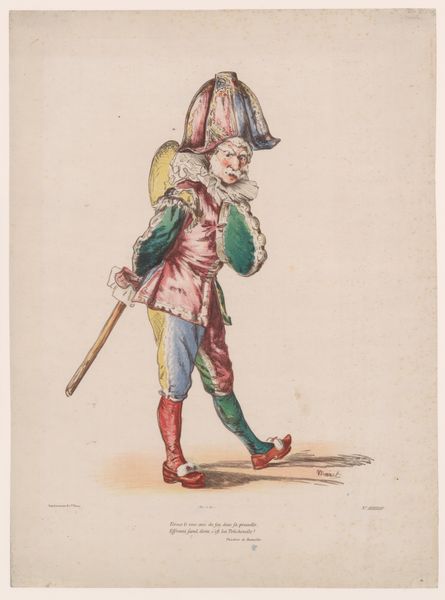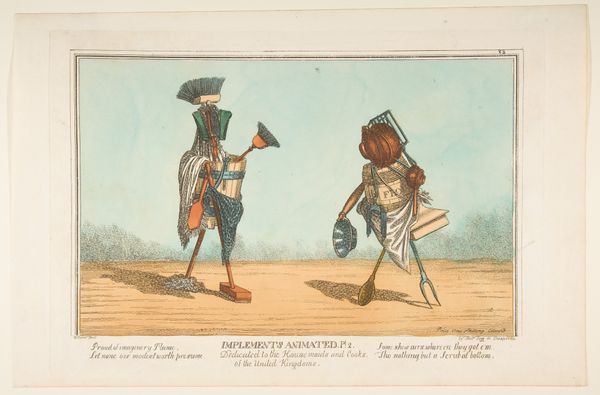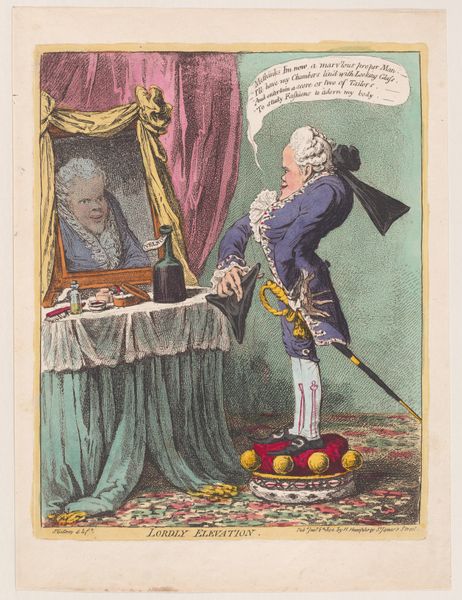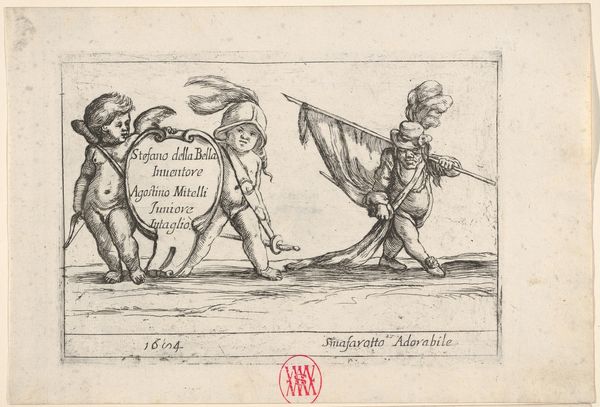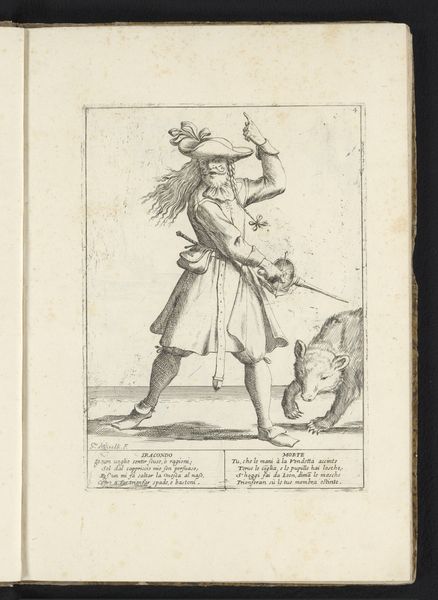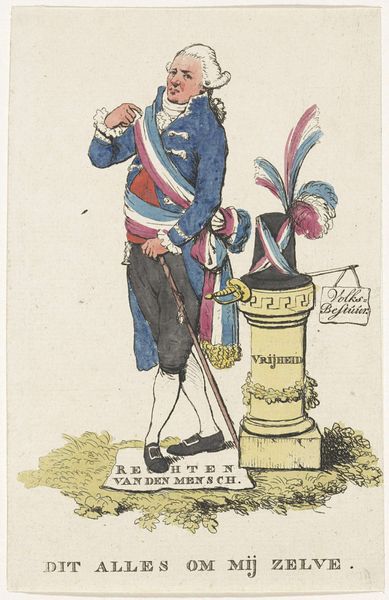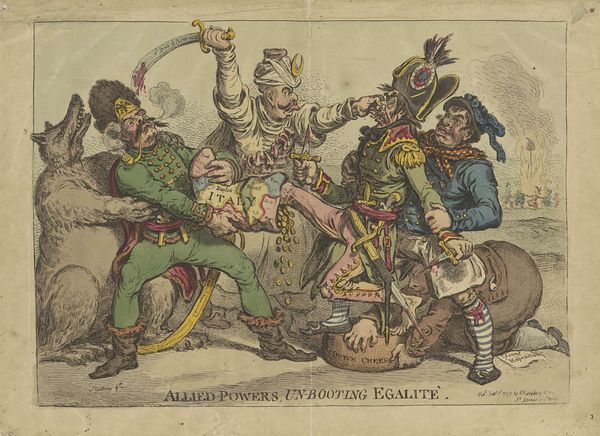
drawing, lithograph, print, ink
#
drawing
#
lithograph
# print
#
caricature
#
ink
#
history-painting
Dimensions: height 252 mm, width 351 mm
Copyright: Rijks Museum: Open Domain
Curator: This lithograph with ink, made around 1830 by an anonymous artist, is entitled "Spotprent op De Potter." It looks to me like we have here a somewhat precarious representation of Belgian nationhood. Editor: My eye immediately goes to the odd figure dominating the scene. He's pieced together with all sorts of pots and pans. What's with all the cookware? Curator: These household objects form a satirical armor of sorts. They're meant to depict the vulnerabilities, the rough edges, but also perhaps the improvised strength of this nascent nation. He seems quite unhappy, actually. And there's a visual dialogue happening between the two flags he stands before... Editor: That does explain the strange collection. So the materials themselves represent the cobbled-together nature of the state, maybe highlighting a kind of everyday resilience and ingenuity borne out of necessity. Look at how they are stacked and connected; they become meaningful not for their original purpose, but the way in which they are brought together and given new context. I am seeing also other smaller figures surrounding it. Are they significant? Curator: They are. Notice how some cling to him while others tumble away. These represent different political factions and popular opinions toward De Potter and the idea of Belgian independence. You also have the symbolic weight of those flags; the figure is stuck between supporting Belgian Freedom and falling victim to "Hollandschjuk" meaning the "Dutch Yoke" the term for Dutch rule after the defeat of Napoleon, indicating the constant political tension of the time. Editor: It’s fascinating how the mundane—the pots and pans, the printed paper of the flag—are elevated here to represent larger socio-political forces. Did these sorts of print materials circulate widely? How might the availability of such imagery shaped popular consciousness during that period? Curator: Lithography allowed for relatively quick and inexpensive reproduction, which made such political caricatures powerful tools. Symbols, readily understandable to the public, cut through complex issues with wit and often biting social commentary. Editor: Looking at it again, it is a far more potent statement on material culture in politics than I had first given credit. Thank you. Curator: It's a great case study on how anxieties are portrayed through loaded, pointed symbols.
Comments
No comments
Be the first to comment and join the conversation on the ultimate creative platform.
